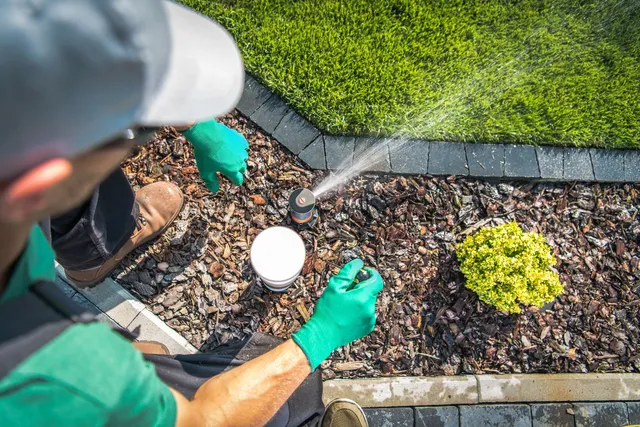Ultimate Guide to Sprinkler System Design
If you’re like most people, you’ve got a lawn. And if your lawn is anything like mine, it’s probably begging for more water than I can give it during the hot summer months. Luckily for us both, one of the easiest ways to keep your lawn green and healthy is with a sprinkler system that automatically waters your grass when it needs to be watered. But before you go out and buy yourself an automatic controller and some sprinkler heads, I want to share some tips about how to design a sprinkler system so that yours will work as well as possible. And if you are looking for an Indianapolis sprinkler system, we got you covered!

Content
Water deeply, but less often
When you water your lawn, it’s important to remember that the goal is not to keep the grass green. Watering encourages deep root growth and helps prevent diseases like fusarium patch and summer patch by keeping the soil moist at all times.
Your lawn should receive one inch of water per week–more during hot weather and less when it’s cool out. To measure how much water your sprinkler system delivers per hour, simply place a 5-gallon bucket on its side in front of an irrigation head and time how long it takes for all five gallons to flow into it (you may need some help here). Then multiply this number by four (because there are four heads per station) to find out how many inches you’re delivering every hour!
Lay out your sprinkler system
- When laying out your sprinkler system, consider the size of your lawn and yard. You’ll want to make sure that you don’t get too many nozzles per square foot — if there are too many, they will overlap and spray water on each other instead of reaching the ground.
- Think about how much slope is in your yard as well. If there’s not much slope at all (or even none), then it’s okay to use more nozzles than usual because they won’t be affected by gravity as much as they would be if there were a lot of hills or slopes in play here!
- The last thing worth considering before getting started with designing this part of your sprinkler design plan is how often do you want your sprinklers turned on? If it’s going to be once every few days during peak summer heat periods only when needed most urgently by plants/grass etc., then perhaps layering up some extra layers may not matter so much since most people won’t need extra watering anyway – but if someone wants something different like having automatic watering occur daily throughout spring-fall seasons regardless whether there’s rain forecasted within next 24 hours ahead…then maybe having multiple zones might help meet those needs better since then users could control exactly how often each zone gets turned on independently without affecting others too much (and vice versa).
Consider adding an automatic controller
If you’re looking to make your life a little easier and save money on your water bill, consider installing an automatic controller. These devices are easy to install and can help keep your lawn healthy and green without requiring any additional work from you. Automatic controllers also come in handy when it comes time for watering during the summer months–you can set them up so that they turn off at night when temperatures drop below 50 degrees Fahrenheit (10 degrees Celsius). This keeps the grass from getting too much sun damage during those hot summer days!
Sprinkler systems are important, and it’s important to know how to take care of them so they can take care of you!
Indianapolis Sprinkler systems are an important part of lawn care. While no one likes to spend time in the hot sun, it’s important that you take care of your sprinkler system so it can take care of you!
First, carefully consider the layout and design of your yard. The best way to do this is with a professional who can help determine where each zone should go based on factors like sun exposure and soil type. Once you have decided on where each zone should be located, mark out their boundaries with stakes or flags so that no one accidentally steps into them while mowing the lawn.
Next up: pesticides! It’s important not just for safety reasons but also because using low toxicity products will allow beneficial insects like ladybugs (and even birds) onto your property without any issues whatsoever!
Finally–and this may seem counterintuitive–water deeply but less often when possible; deep watering encourages roots growth while shallow watering encourages surface growth which means more weeds/grass rather than flowers/vegetables…
Conclusion
We hope this guide has given you a good overview of how to design and maintain a sprinkler system for your lawn. With the help of our expert tips and advice, we’re confident that you’ll be able to take care of your garden like a pro!

Kurt Avans is a home improvement blogger who strives to improve his life and the lives of others. He provides homeowners with helpful tips on how to renovate their homes. His goal is not only to provide easy-to-follow instructions, but also share his own personal experiences for those seeking guidance.






